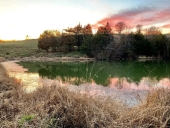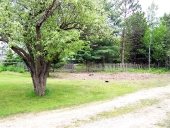
 15
15
















 8
8




Visit Redhawk's soil series: https://permies.com/wiki/redhawk-soil
How permies.com works: https://permies.com/wiki/34193/permies-works-links-threads








 7
7




Joy to You
 5
5




A build too cool to miss:Mike's GreenhouseA great example:Joseph's Garden
All the soil info you'll ever need:
Redhawk's excellent soil-building series





 3
3




Jay Angler wrote:Wow! Planting a few trees might seem like it would be easier than planting 100 trees, but I find that there's more pressure to get it right because you're counting on all of them surviving. I'm short on sunshine, so I can only plant in a few spots on edges, so I too feel like I need to give every fruit tree the best chance I can.
Some ideas that I've used successfully - I'm also on clay soil:
1. I try to water really deeply when I do water, and then wait as long as possible to water again. My theory is that this will encourage the roots to go deep. I don't know how quickly the bags you're using take to empty, but I'd try to measure that time frame. If it's "hours" I'd try refilling them twice that many hours apart, and ideally in the cool of the evening and late evening so the water soaks as deeply as possible. For trees I've planted near a hose, I've watered slow drips all night, then not again for 2 weeks if possible.
2. Next year, instead of having the watering bag around the tree trunk - which isn't actually where I want the roots to hang out - I'd dig a hole (loosen the dirt at least) and add some goodies in three spots in a circle at least 5 ft out from the trunk. I'd stake the watering bags over those spots and water those spots deeply in the theory that it will encourage the roots to travel out to those areas. The little apple tree I did that for has done amazingly well rather than dying which is what I expected after all the abuse it had suffered before coming to live on my farm.
3. Eric Hanson has found that adding a little organic straw to the spot you're inoculating with wine caps really helps them get established. He's also found that they need the wood chips to be in contact with soil, so I'd keep an eye on the cardboard to make sure it's decomposing and not being a barrier between the wood chips and soil. That really depends on the situation - in places I've got happy earthworms, it hasn't been a problem. Apparently, earth worms really like to eat cardboard, but only damp cardboard - not the hard dry stuff.
It sounds like you've done a great job - I hope they all prosper under your watchful eye. Good reminder, I need to try to dig up a little comfrey from my successful patches to add around the two apple trees I planted this winter.
 3
3




John Indaburgh wrote:Looking at your cider apple selections, seems as though you need more sweet apples. If you use a blend as usually recommended you'd need twice as many sweet apples as all the rest combined. I'd say you need a full/semi-full sweet tree to take over after the dwarf's get outproduced by the large tree/s
 3
3




John Indaburgh wrote:I planted cider apples last year and chose varieties based on precociousness, annual bearing, and their respect in the cider world.
My selections were Dabinett, Porter's Perfection, Golden Russet, and Harrison. This year I'm adding Ashmead's Kernel, but I'm worried I don't have a pollinator for a triploid. Some do say the AK is a diploid. I have a lot of late blooming sweet varieties to come up with a good blend.
Good luck with your new orchard.
 2
2




Angela Wilcox wrote:Hi Laurel,
I'm so happy to see another Kentucky gal planting apple trees! Your set up looks beautiful and your property sure does show the beauty of our state. This year is a perennial starting year for me also. I wish you much success. Do you have much deer pressure? I'm intrigued by the watering sacks. Might you please post a few more pics of the sacks at different angles? Thanks!




Trace Oswald wrote:Send me a message if you need more Comfrey roots.




I heard this from an old-timer, so it would be nice is someone could confirm it, but they claimed that deer spread botulism spores, so if you were going to make cider or juice out of the apples, it's important to *only* use apples you pick, not wind-falls that are on the ground.We have plenty of deer hanging around, and they actually seem to particularly like this hill (grumble grumble)
Visit Redhawk's soil series: https://permies.com/wiki/redhawk-soil
How permies.com works: https://permies.com/wiki/34193/permies-works-links-threads




Jay Angler wrote:Laurel Jones wrote:
I heard this from an old-timer, so it would be nice is someone could confirm it, but they claimed that deer spread botulism spores, so if you were going to make cider or juice out of the apples, it's important to *only* use apples you pick, not wind-falls that are on the ground.We have plenty of deer hanging around, and they actually seem to particularly like this hill (grumble grumble)
Windfalls can still be used for baking, animal feed (my old goose who passed last spring absolutely adored apples - don't know about my new rescue goose yet), and a hunter friend used them to set up a bait center for deer. You may find that the deer will specifically come around and eat the windfalls once the trees are in production, and I actually find that an asset as our trees are near the house and windfalls also attract wasps. Wasps are great at harvesting caterpillars, so I appreciate their role on my homestead, but they tend to get goofy in the fall and I react badly to stings, so everything is a balance!
 1
1




Laurel Jones wrote:Thanks. I know next to nothing about cider. I was under the impression that with the backbone of a bittersharp type cider apple, the volume of fresh eating apples may even be too sweet, but it sounds like that's not the case? What type of full-sweet tree do you recommend?

 1
1




Laurel Jones wrote:interesting tidbit about the botulism. I was under the impression that the spores are basically everywhere, so try to be careful about management of that stuff. If we decide not to ferment cider, I'll freeze it, and if we ferment it, i can't imagine there'd be much harm in fermenting it out and then refrigerating? I guess I'll do more reading.
 1
1








John Indaburgh wrote:
Laurel Jones wrote:Thanks. I know next to nothing about cider. I was under the impression that with the backbone of a bittersharp type cider apple, the volume of fresh eating apples may even be too sweet, but it sounds like that's not the case? What type of full-sweet tree do you recommend?
There's a list at this link. It shows a list of recommended varieties in each cider classification. The usual blend would contain 60% sweet apples; so I'm suggesting you would need either more trees of your sweet variety, or a larger tree.
There's a cider press near me that will press my apples for a minimum $12.50 charge. So my goal is to have all my apples pressed in one visit. So I've decided on late apples that will ripen and sweeten up before they close in early November. I have Baldwin, Rome, Golden Russet, and McIntosh the last is a little early ripening. You could possibly make a list of your families favorite apple and pick the one that's most suggested for cider making.
 2
2




Eino Kenttä wrote:
Laurel Jones wrote:interesting tidbit about the botulism. I was under the impression that the spores are basically everywhere, so try to be careful about management of that stuff. If we decide not to ferment cider, I'll freeze it, and if we ferment it, i can't imagine there'd be much harm in fermenting it out and then refrigerating? I guess I'll do more reading.
That's the way I've understood it too. From what I've read, you can assume that any food that hasn't been pressure-cooked has spores on it, and make sure that they don't grow. Things that keep them from growing should be oxygen, low pH, high percentage of salt, and very low temperatures. I don't know the pH of apple juice, but if it's low enough maybe that in itself is enough to keep the botulism at bay?
 3
3




I've never heard of beer having botulism, even in the US where the alcohol % is lower than here in Canada (or it at least used to be in my teen years), so I suspect that alcoholic cider isn't a problem.Laurel Jones wrote: Rad, thanks. It looks like (per this Reddit Thread, which we all know internet hearsay is flawless ) botulism has very low alcohol tolerance, so there's little concern with a "normal" strength cider. I tend to be careful about food safety, but also figure if people 200 years ago were able to do it safely, chances are that my home kitchen can also handle the challenge.
Visit Redhawk's soil series: https://permies.com/wiki/redhawk-soil
How permies.com works: https://permies.com/wiki/34193/permies-works-links-threads
 2
2




Jay Angler wrote:
OT - I have a small Sparton apple tree. My people aren't keen on eating them, and the fruit is small enough to be a bit annoying to bake with. Last year, I put the whole lot through a friend's juicer, with a plan that never happened - OMG was it delicious. It all disappeared into people before the "plan" ever happened. They liked it so much that I froze it in 1 liter bottles just so they didn't disappear it all in one week! To me, commercial apple juice is too boring to bother with. It never occurred to me that fresh-squeezed Sparton apples would be a total hit. So before anyone frets over whether they've got the "right balance" etc - try it and decide for yourself!
 2
2





 2
2




Visit Redhawk's soil series: https://permies.com/wiki/redhawk-soil
How permies.com works: https://permies.com/wiki/34193/permies-works-links-threads
 1
1




Jay Angler wrote:Laurel Jones wrote:
I heard this from an old-timer, so it would be nice is someone could confirm it, but they claimed that deer spread botulism spores, so if you were going to make cider or juice out of the apples, it's important to *only* use apples you pick, not wind-falls that are on the ground.We have plenty of deer hanging around, and they actually seem to particularly like this hill (grumble grumble)
Windfalls can still be used for baking, animal feed (my old goose who passed last spring absolutely adored apples - don't know about my new rescue goose yet), and a hunter friend used them to set up a bait center for deer. You may find that the deer will specifically come around and eat the windfalls once the trees are in production, and I actually find that an asset as our trees are near the house and windfalls also attract wasps. Wasps are great at harvesting caterpillars, so I appreciate their role on my homestead, but they tend to get goofy in the fall and I react badly to stings, so everything is a balance!

|
A day job? In an office? My worst nightmare! Comfort me tiny ad!
Learn Permaculture through a little hard work
https://wheaton-labs.com/bootcamp
|








